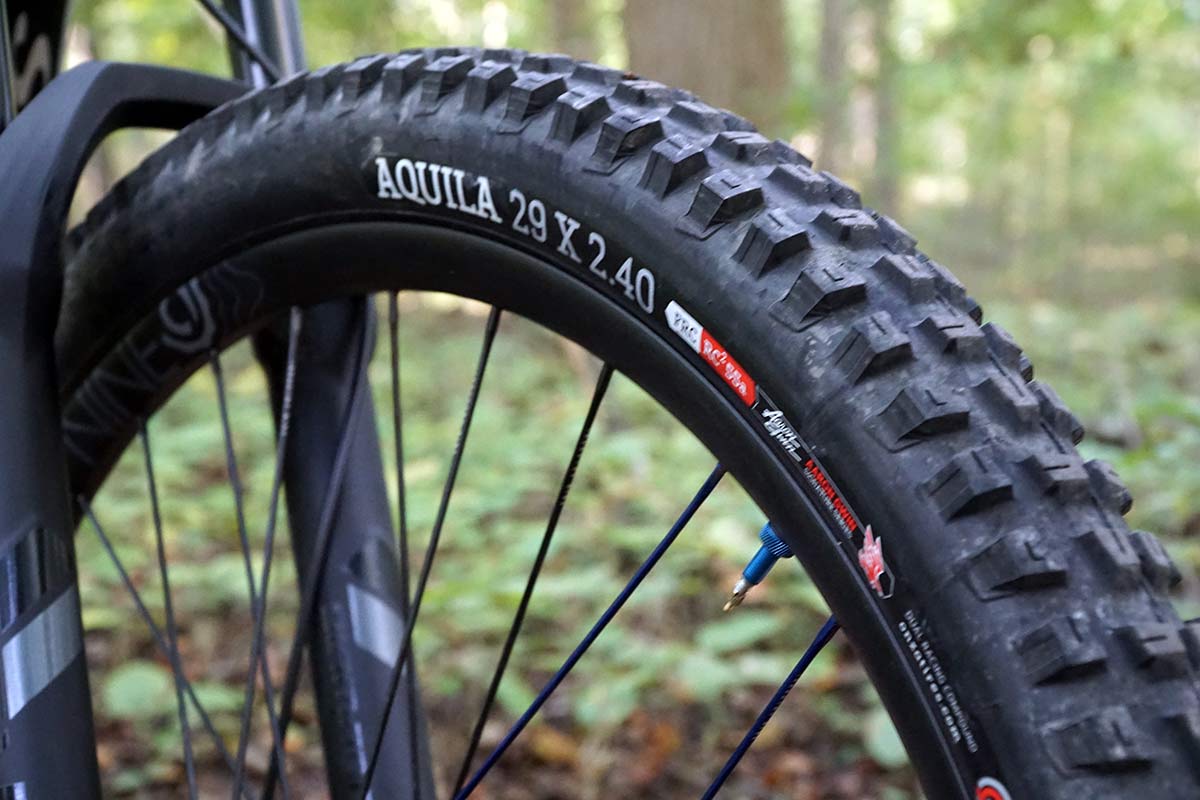


Do mountain bike tires have tubes? This is a common question among new and experienced drivers. The answer lies in the type of tire system used on mountain bikes. Traditionally, mountain bikes use a tire and tube system similar to road bikes.
Read More : ” Which Cycle Is Best For Mountain? “
However, as technology advances, tubeless tires are gaining popularity in the mountain biking community.
A traditional tube-mount mountain bike tire consists of an outer tire and an inner tube that resists air pressure and provides cushioning. The inner tube is inserted into the tire and inflated to the desired pressure.
This system has been widely used for years and is now widely used on entry-level mountain bikes or bikes with narrower tires.
On the other hand, tubeless tires are gaining popularity among mountain bikers. Tubeless mounting creates an airtight seal between the tire and rim, eliminating the need for an inner tube. The tires are mounted directly on the rims and a sealing liquid is added to prevent air leaks.
This configuration offers several advantages such as reduced rolling resistance, increased traction, and the ability to operate at lower tire pressures without the risk of binding.
In recent years, tubeless technology has become mainstream and is now widely used in mid-range and high-end mountain bikes. Many manufacturers offer their bikes with off-the-shelf tubeless wheels and tires, making it easy for riders to switch to tubeless bikes if they choose.
Therefore, whether a mountain bike tire has an inner tube depends on the particular bike and tire configuration. Riders can choose between the benefits of a traditional tube setup or tubeless technology. The choice often comes down to personal preference, riding style, and the terrain the bike will be used.
Read More : ” Difference between mountain bike and gravel bike “
Understanding Tire Systems: Tubes vs. Tubeless
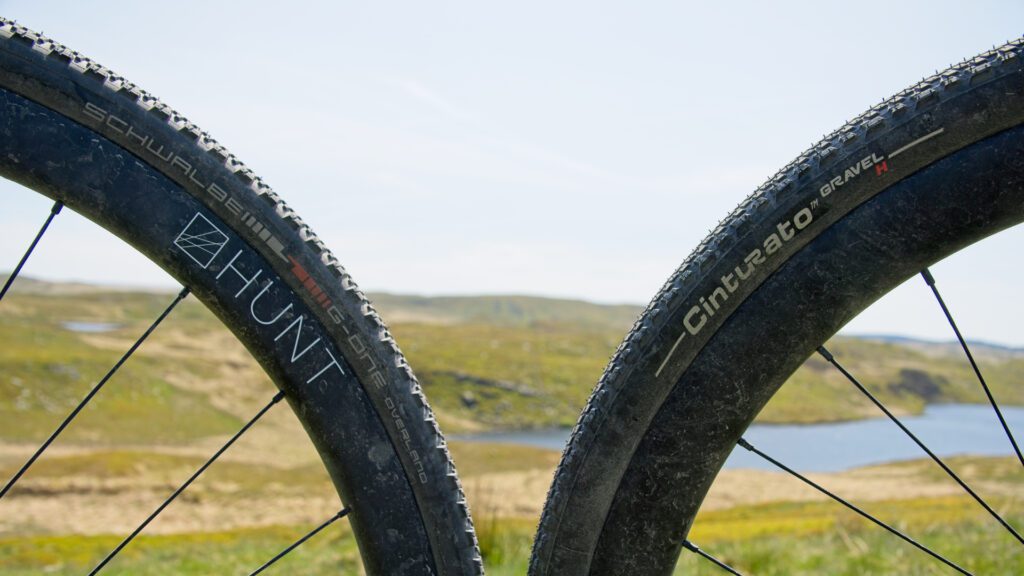


Tires play a very important role in mountain bike performance and ride quality. An important aspect to consider is the tire system, in particular the choice between tubed or tubeless operation. The following is a brief description of the two tire systems:
Read More : ” Is Front Suspension Necessary On A Hybrid Bike? “
Tubes:
Traditional mountain bike tires come with an inner tube, which is a rubber tube that keeps air inside the tire. The inner tube is inserted into the tire and both of them are mounted on the rim. When a tire is inflated, the inner chamber expands, creating pressure that allows the tire to spin smoothly.
Tubeless:
In recent years, tubeless tires have grown in popularity in the mountain bike world. Tubeless tires do not have an inner tube. Instead, the tire itself creates an airtight seal on the rim, trapping the air inside.
Tubeless tires are usually used with a special rim tape, sealant, and valve system that allows for easy inflation and maintenance.
Here are a few important points to keep in mind when comparing tubes and tubeless systems:
Puncture resistance:
Tubeless tires are generally more resistant to punctures due to the sealant being able to seal small punctures on the go. On the other hand, the tube is more prone to punctures as sharp objects can get into it.
Ride Quality:
Tubeless tires provide lower tire pressures for better traction, comfort, and control over rough terrain. The tube can feel stiff, especially at higher pressures, and create more vibration on the actuator.
Maintenance:
Although tubeless tires require periodic maintenance, such as checking and filling with sealant, they may need to be replaced in the event of a puncture. However, tubeless rigs can be more difficult to pre-install and may require careful installation.
Weight:
Tubeless designs tend to be lighter than tire systems with tubes because no extra weight is needed on the tubes.
In the end, choosing between tubeless and tube tires comes down to personal preference, riding style, and terrain. It is important to weigh the pros and cons of each system and make a decision based on your specific needs.
Related : ” How Long Should Mountain Bike Tires Last? “
Traditional Tube Systems: How Mountain Bike Tires with Tubes Work
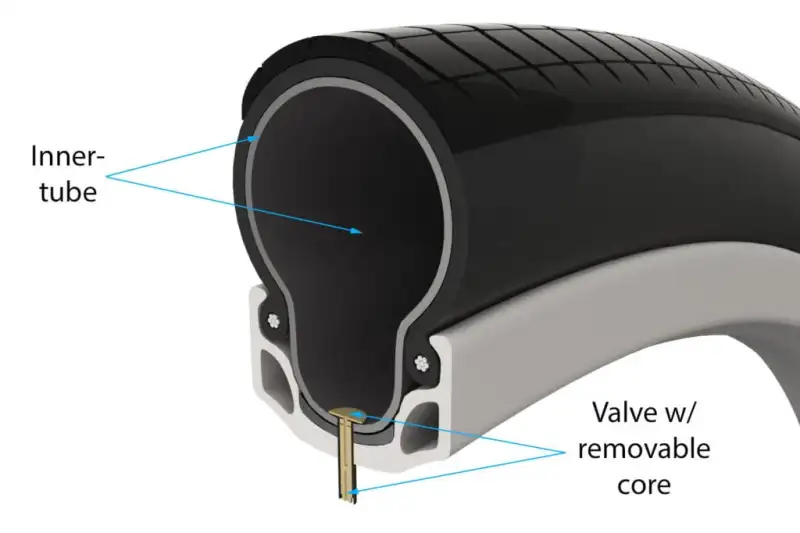


Mountain bike tires with tubes have been the standard for many years, providing a reliable and cost-effective solution for riders. Understanding how this tube system works can help you make the right decisions about tire selection and maintenance.
Read More : ” Can You Ride A Mountain Bike In The Rain? “
You can find out more about how mountain bike tires with tube work here:
Inner Tube:
The inner tube is made of a soft rubber material designed to withstand the air pressure inside the tire. They are usually ring-shaped and sized to fit a specific tire width and diameter. A cylinder valve, usually a Presta or Schrader valve, is used to inflate and deflate the air.
Fitting:
To install the inner tubes, the inner tube is placed in the tire casing made of durable rubber compound. The tire and tube assembly are then mounted to the rim and secured with tire levers. Once fitted, the inner tube is inflated with air using a pump until the desired tire pressure is reached.
Functionality:
When a tire is inflated, the air sac expands and fills the space between the tire case and the rim. This creates pressure that allows the tire to hold its shape and provide a smooth ride. The inner tube acts as a barrier to prevent air leaks and keep the tire intact.
Maintenance:
Tube tires require regular maintenance to ensure optimum performance. This includes checking the tire pressure before each ride, as air loss can occur over time. It is also important to check the tires for any signs of damage or wear, such as cuts, punctures, or dents.
If the tube is leaking, it can be repaired with a patch or replaced entirely.
Benefits:
Inner tubes are generally more economical than tubeless tires. They’re also relatively easy to install and maintain, making them accessible to drivers of all experience levels. Additionally, tubing systems tend to be more forgiving when it comes to wheel compatibility, as the tubing can be used with a variety of wheel designs.
While tubeless systems have grown in popularity in recent years, traditional tubes still offer a reliable and efficient solution for mountain bikers. Drivers who understand how the tube system works and take good care of it can enjoy a smooth and hassle-free ride off-road.
Read More : ” Is Mountain Biking A Good Workout? “
Advantages of Tube Tires: Improving Performance and Ride Quality



Mountain bike tires with tubes have long been the top choice of riders and offer several benefits that help improve ride quality. Understanding these benefits will help you make an informed decision when choosing tires for your mountain bike.
Some of the advantages of inner tubes are as follows:
Cost-Effective:
Tube tires are generally more economical than tubeless setups. The simplicity of design and construction makes it an economical choice, especially for drivers on a budget.
Ease of Installation:
Installing the tube tires is relatively easy and can be done without special tools. The process involves placing an inner tube inside the tire, attaching it to the rim, and inflating it with air. This simplicity makes it accessible to riders of all levels.
Wide Compatibility:
Tube tires are compatible with a wide range of rim designs. Whether you have a standard rim or an older model, tube tires are easy to install, making them a versatile choice.
Puncture resistance:
Tube tires offer better puncture resistance compared to tubeless mounts. The tube acts as an additional layer of protection, reducing the risk of being punctured by sharp objects on the road. In the event of a puncture, repair or replacement of the inner tube is a simple and economical solution.
Ride Comfort:
Tube tires absorb shock and vibration from rough terrain for a smooth ride. The tubes add an extra layer of flexibility, improving overall comfort and reducing fatigue during long rides.
Reliable performance:
Tube tires provide stable and predictable performance in a variety of track conditions. The presence of an inner tube helps maintain proper tire pressure, providing optimal grip and traction when cornering, braking, or negotiating obstacles.
Maintenance:
The internal tubes are relatively easy to maintain. Checking and adjusting tire pressure regularly, checking for signs of wear or damage, and replacing the inner tube if necessary are simple maintenance tasks that contribute to tire longevity.
While tubeless tires are growing in popularity, tube tires still offer many benefits that make them a viable option for mountain bikers. Economy, ease of installation, compatibility, puncture resistance, ride comfort, reliable performance, and ease of maintenance have made them a popular choice for riders of all skill levels.
Choosing the Right Tire Setup: Factors to Consider for Your Riding Style
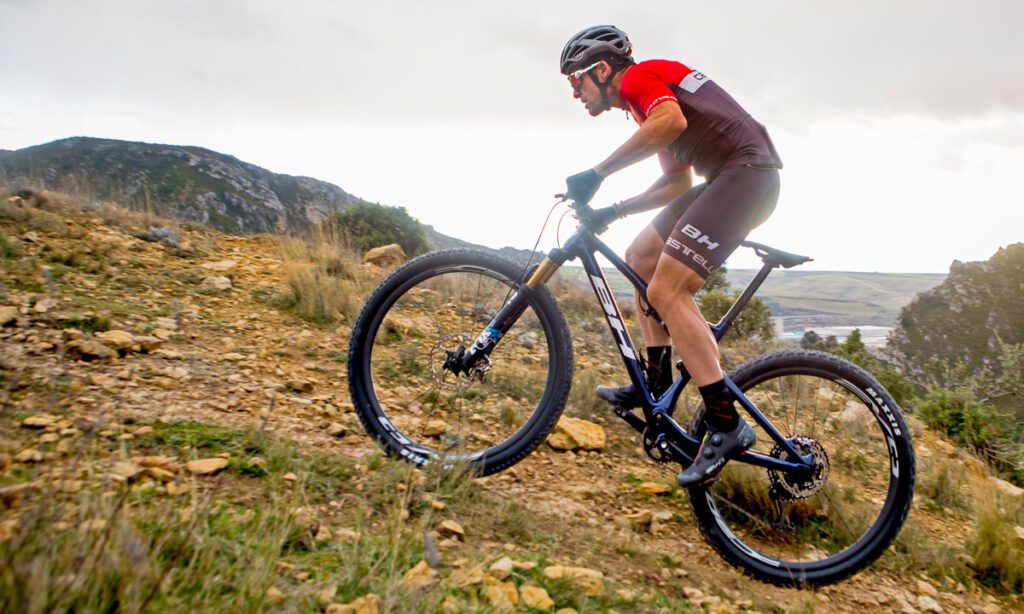


When it comes to mountain biking, choosing the right tire configuration is key to optimizing your riding experience and performance. Several factors must be considered, including your driving style, terrain preferences, and personal preferences.
Here are some key factors to help you choose the right tire set:
Driving Style:
Your driving style plays an important role in determining your ideal tire setting. If you like technical descents or aggressive trails, tires with wider bumps at lower tire pressures can provide better traction, stability, and control.
On the other hand, if you’re off-road or endurance riding, lighter, faster tires at higher tire pressures can improve speed and efficiency.
Type of terrain:
The type of terrain you use most often should also affect tire selection. Tires with deep, aggressive treads in loose, muddy conditions can improve traction and mud resistance. For rough or rocky roads, tires with a softer tread and a harder rubber compound can offer lower rolling resistance and better durability.
Tubes versus tubeless:
Another big question is whether to go for a tube or tubeless tire system. Tubeless arrangements have grown in popularity due to their ability to operate at lower tire pressures, which reduces the risk of jamming and increases traction. They also offer the advantage of self-closing holes.
However, tube setups are generally more economical, easier to install, and can still provide reliable performance.
Tire Width:
Tire width affects tire contact area and overall grip. Wider tires provide a larger contact area, which can improve stability, traction, and cushioning. Conversely, narrower tires can improve handling and agility. Consider the terrain and driving style to determine the best tire width for your needs.
Sidewall Structure:
A tire’s sidewall structure affects its durability and resistance to cuts and punctures. Options include lightweight, flexible sidewalls for a better, more responsive ride, and reinforced sidewalls for added protection against sharp rocks and road obstacles.
Tread composition and pattern:
The composition and pattern of the tread affect rolling resistance, traction, and durability. Softer rubber compounds provide better traction but may wear faster, while harder compounds provide greater durability at the expense of some traction.
Choose a tread pattern suitable for your riding conditions, taking into account factors such as tread size, tread spacing, and tread block layout.
Personal preference:
Finally, consider your personal preferences and driving goals. Factors such as weight, brand reputation, aesthetics, and budget can also influence tire selection.
Remember that choosing the right tire setup is all about balancing various factors based on your driving style, terrain preferences, and personal preferences. Experimenting and testing different settings can help you find the perfect tire setup that will improve your performance and enjoyment on the track.
Maintenance and Care: Tips for Properly Maintaining Tube Tires
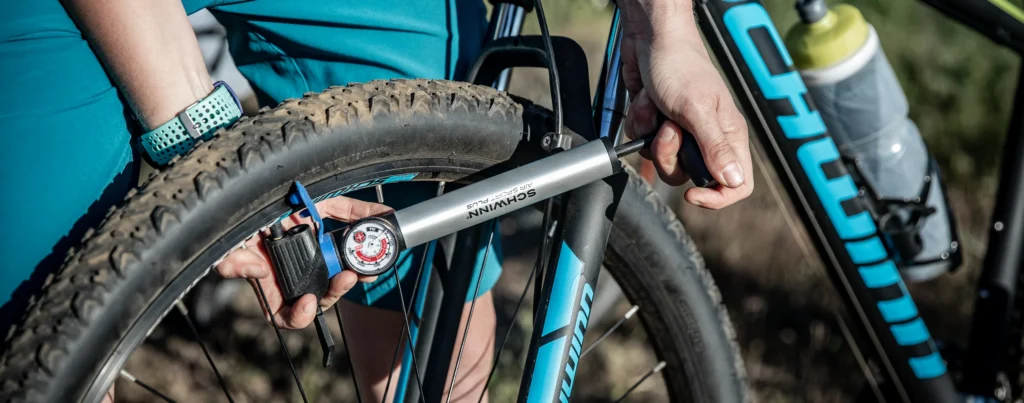


Proper care and maintenance of your mountain bike tube tires are essential for optimal performance, durability, and ride quality. By following a few simple maintenance rules, you can keep your tires in top condition. Here are some tips for caring for tube tires:
Regular Inspection:
Check your tires regularly for signs of wear, tear, or damage. Check tread depth, sidewalls, and valve stem for visible problems. Replace tires with significant wear or damage.
Proper inflation:
Maintain the correct tire pressure as recommended by the manufacturer. Under-inflated tires can cause slippage, reduced traction, and handling problems, while over-inflated tires can cause rough handling and poor traction. Use a reliable pressure gauge to ensure proper pumping.
Valve Maintenance:
Inspect the valve stem for signs of damage or leaks. Make sure the valve core is properly tightened. If you notice air leakage from the valve, tighten the core or replace it if necessary.
Tire Conversion:
Change your tires regularly to ensure they wear evenly and prolong tire life. Replace front and rear tires to evenly distribute workload and wear.
Cleaning:
Clean your tires regularly to remove dirt, deposits, and any debris that may affect traction. Scrub the surface of the tire gently with a mild soap or bicycle cleaner and a soft brush or sponge. Rinse thoroughly and let dry before cycling.
Puncture prevention:
Although tube tires are more susceptible to punctures than tubeless tires, there are steps you can take to minimize the risk. Use puncture-resistant tires or consider adding tire sealant or sealant for extra puncture protection.
Timely replacement:
Over time, the tire’s rubber can harden and the tread pattern wears off, affecting traction and performance. Monitor the condition of the tires and replace them if they show signs of wear or damage.
Storage:
Store your bike in a cool and dry place when not in use to prevent premature tire wear. Keep away from sharp objects and direct sunlight, which can damage the rubber compound.
By following these maintenance tips, you can extend the life of your inner tube and enjoy a smoother, safer ride. Regular inspections, proper inflation, and timely replacements keep your tires performing at their best, giving you optimal grip and control on the track.
Selecting the Right Tires: Factors to Consider Beyond Tube Systems
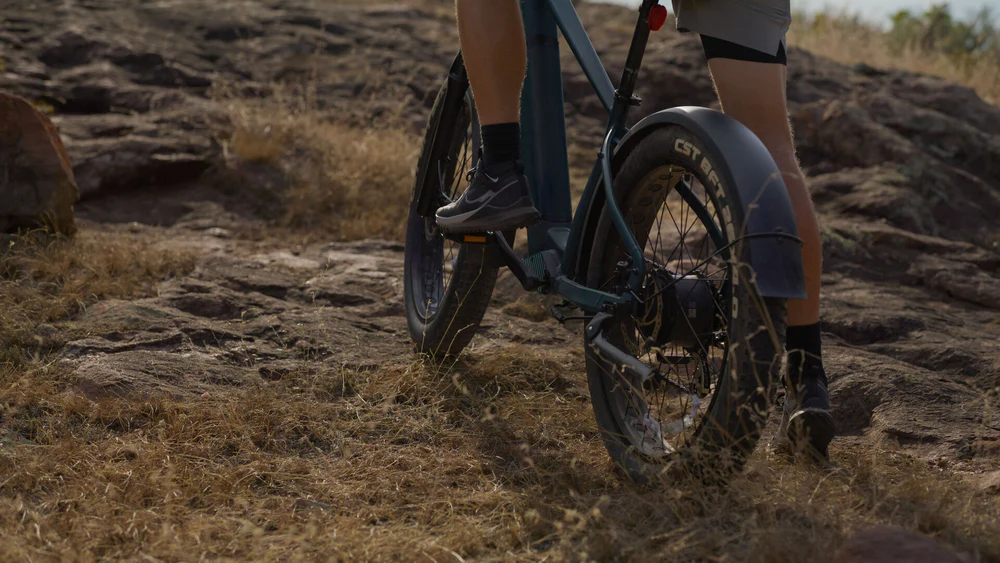


Besides the inner tube, there are several factors to consider when choosing the right mountain bike tire. While tube and tubeless are common in the cycling world, other aspects of tire design and construction can make a big difference to your riding experience.
Here are some of the main factors to consider when choosing the right tires for your mountain bike adventure:
Tire width:
The width of a tire plays an important role in determining its performance on various terrains. Wider tires provide more stability and traction on uneven roads, while narrower tires are lighter and turn faster on smoother surfaces.
Tread:
The tread of a tire determines its traction and traction. The aggressive, ribbed tread is ideal for loose or muddy terrain, while the smoother tread is suitable for paved or hard-packed surfaces.
Rubber Compound:
The rubber compound used in tire making affects grip, durability, and rolling resistance. Softer compounds provide better traction but wear faster, while harder compounds provide longer life but can reduce traction.
Body Construction:
A tire’s case affects its strength, weight, and puncture resistance. Casing with a higher thread count is more flexible and provides better performance, while thicker rings provide better flats protection.
Tubeless Ready:
Even if you initially choose to use a tubeless tube, remember to choose a tubeless ready-to-use tube. The tubeless system offers benefits such as reduced rolling resistance, better traction, and driving at lower tire pressures for greater comfort and control.
By considering these factors and finding the right balance for your riding style, terrain, and preference, you can choose the best tire for your mountain biking needs. Be sure to evaluate your local riding conditions and seek advice from an experienced rider or bike shop professional to make an informed decision.
As a result, choosing the right tires for your mountain bike is not limited to a simple tube. By evaluating tire width, tread, rubber compound, carcass design, and tubeless options, you can find the perfect combination that will increase your performance and driving pleasure on any terrain.
Pros and Cons of Tube and Tubeless Tires: Making an Informed Decision
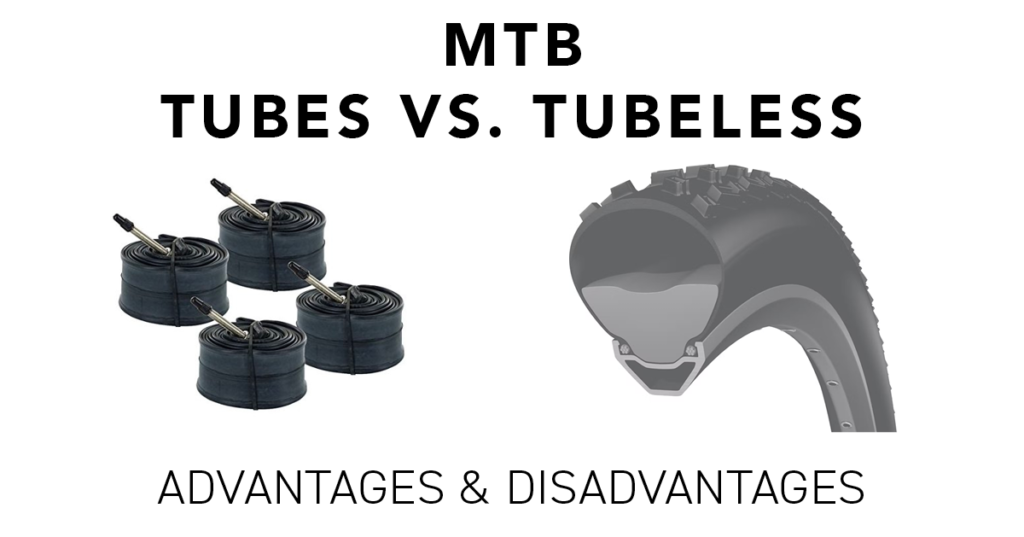


When it comes to mountain bike tires, choosing between tube and tubeless options is an important decision. Each has its advantages and disadvantages, which must be carefully considered. Knowing the pros and cons will help you make an informed decision based on your driving style and preferences.
Pros of tube tires:
- Availability:
Tubular tires are generally more affordable than tubeless tires, making them an economical choice.
- Easy Installation:
Installing interior plumbing is a simple process that can be done at home with simple tools.
- Tire repair:
If a leak occurs, the inner tube is relatively easy to repair or replace.
Cons of inner tubes:
- Weight gain:
Internal space adds weight to the bike, which can affect overall performance, especially when climbing and accelerating.
- Higher rolling resistance:
Tube tires tend to have higher rolling resistance, which can affect speed and efficiency on trails.
- Puncture Susceptibility:
Inner chambers are more susceptible to punctures and pinch flats, especially in uneven or rocky terrain.
Pros of tubeless tires:
- Reduced rolling resistance:
Tubeless tires provide a smoother, faster ride with reduced rolling resistance resulting in increased speed and efficiency.
- Better Traction:
Tubeless tires can run at lower pressure for greater traction and better control, especially over rough terrain.
- Puncture Protection:
Sealant inside tubeless tires helps seal small punctures while traveling, minimizing the risk of punctures.
Cons of tubeless tires:
- Initial Installation:
Mounting tubeless tires can be more complicated and may require special rim tape, sealant, and tubeless-compatible wheels.
- Higher cost:
Tubeless tires are often more expensive to buy because additional components are required.
- Maintenance:
Tubeless tires require periodic checks for sealant levels and possible leaks.
Making an informed decision about choosing between tubed and tubeless tires depends on factors such as your driving style, terrain, and personal preference. Weigh the pros and cons above and consider your priorities to choose the best option for your needs.
Remember to consider tire compatibility with your bicycle rim and seek professional assistance if necessary.
As a result, tube and tubeless tires have their pros and cons. It’s important to weigh them carefully and choose the option that offers the best combination of performance, reliability, and comfort for your mountain biking adventures.
Conclusion:
Do mountain bike tires have tubes? The answer depends on what type of tires you choose. While traditional mountain bike tires usually come with an inner tube, there is also the option of using a tubeless system.
In recent years, tubeless tires have grown in popularity due to their ability to provide better traction, less rolling resistance, and less risk of punctures. But tube and tubeless options have their pros and cons.
Whether you prefer tube or tubeless tires, the most important thing is to choose a tire that suits your riding style, terrain, and preferences. To find the perfect balance of handling, durability, and performance, consider factors such as tire width, tread, rubber compound, and carcass construction.
In the end, choosing between tubed and tubeless tires comes down to personal preference and the specific requirements of your riding. Whichever option you choose, proper care and maintenance are essential to ensure optimum tire performance and durability.
Do mountain bike tires have tubes? The answer is up to you. Assess your driving needs and make an informed decision based on the benefits and considerations discussed. Whether you opt for the time-honored tube system or the innovative tubeless setup, the most important thing is that you can enjoy your mountain biking adventure with confidence and peace of mind.
FAQs:
How do I know if my bike tires have tubes?
You can check if your bike tires have tubes by removing the tire from the rim. If there is an inner tube inside the tire, then your tires have tubes.
Which is better tubeless or tube tyre for mountain bike?
Tubeless tires are generally considered better for mountain biking due to their lower risk of punctures, ability to run lower pressures for better traction, and reduced weight compared to tube tires.
Do all bike tires have tubes?
No, not all bike tires have tubes. Tubeless tires are becoming increasingly popular, especially in mountain biking, as they eliminate the need for tubes.
Is tubeless faster than tubes?
Tubeless tires can provide lower rolling resistance, improved traction, and reduced weight, which can contribute to faster riding compared to traditional tube tires.
Can a tubeless tire go flat?
While tubeless tires are less prone to pinch flats, they can still puncture and lose air. However, they have the advantage of being able to seal small punctures on their own in many cases.
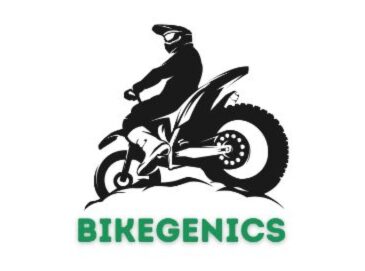


Welcome to Bikegenics, where passion meets performance! We are a leading online destination for all things related to mountain biking, dedicated to providing you with top-notch gear, expert advice, and an immersive community to fuel your two-wheeled adventures. With a commitment to excellence and a deep love for the sport, we strive to elevate your biking experience to new heights.
